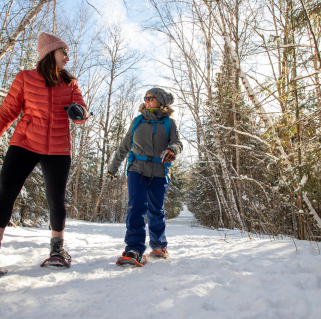Lisa Sciacca
August 16, 2019
So much to do
Summers are busy for all of us; getting together with friends can be difficult even if we are retired! When I am able to paddle with a couple of friends, Gretchen and Patti, it is a special day. On this day we agreed to paddle Lake Kushaqua in Onchiota. Lake Kushaqua is an Algonquin word which means, “beautiful place to rest,” and it is also a beautiful place to paddle.
Getting there
To access the launch site from Saranac Lake, take Route 86 to Gabriels. In Gabriels, take a right onto Rainbow Lake Road, just before the Brighton Memorial Park. Once in Onchiota, take Kushaqua Mud Pond Road, which is located on the left side of the 7 Gables Antique Store, a very unique, must-stop store.
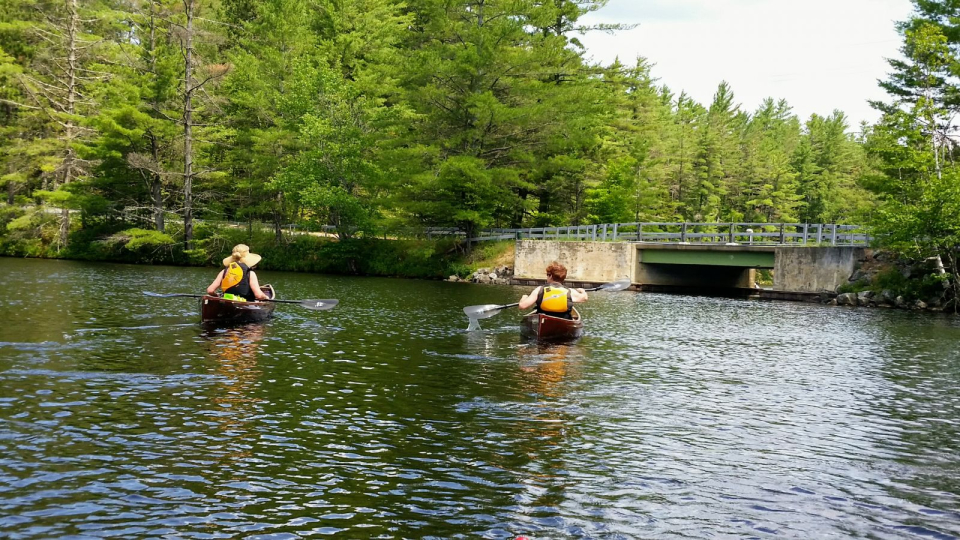
Once on Kushaqua Mud Pond Road you will come to bridge. There are a couple of launch sites near the bridge and plenty of room to park along the road. You may launch by carrying your kayak over the guardrail and down an incline on the right, or you can drive in on the narrow dirt road on the left side of bridge, unload, and then park along the paved road. We found it easier to launch from the dirt road; however, there was a vehicle on the dirt road, so we carried our kayaks the short distance to the launch site on Rainbow Lake. Once launched we headed right, under the bridge, to reach Lake Kushaqua, and then we went through the tunnel.
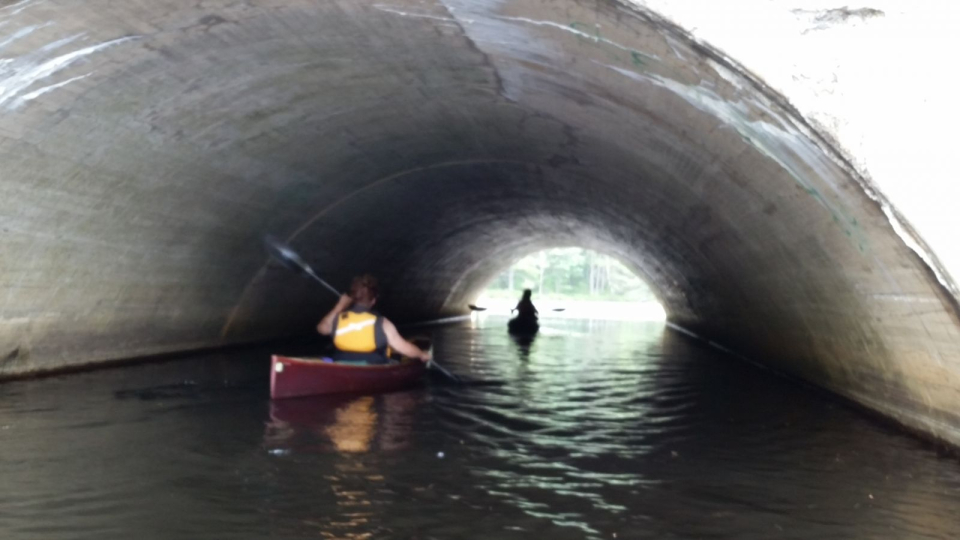
Memories spike my interest to do research
I have vague memories of being in this area when I was a child. My family lived in Paul Smiths, so I recalled our family driving to Onchiota to see the White Fathers Seminary. My memory perked my interest enough to do a little research. I was surprised to learn Lake Kushaqua had a lot of history, previous to the White Fathers.
Lake Kushaqua Hotel
The western shoreline was originally the location of one of the first hotels with electric lighting in the Adirondacks, the Lake Kushaqua Hotel. The hotel, built in 1893 by Arthur Leonard and Frank Smith, was constructed after the Chateauguay Railroad and the Adirondack Division of the New York Central Railroad reached the lake. Two cottages were built next to the hotel and later other structures were built, including a boat house, bowling alley, and tennis courts. Guests enjoyed music, dancing, fishing, and biking.
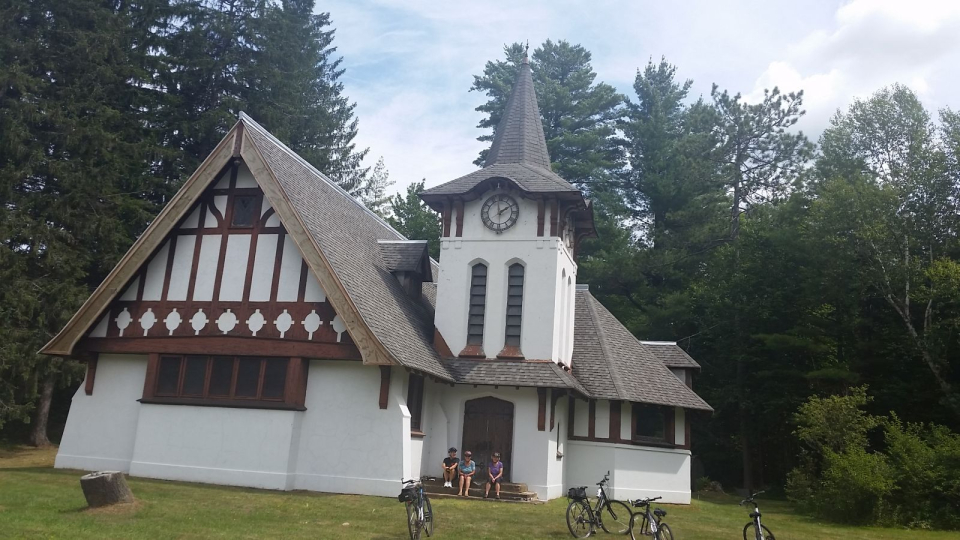
Stony Wold Sanitorium
Elizabeth Newcomb purchased the property in 1901 and built the Stony Wold Sanatorium for underprivileged women with tuberculosis. The sanatorium generated its own electricity in the 1930s, had twenty buildings, and a farm where recovered patients worked along with members of their family. Mostly women were treated; however, men and children were also treated. A staff of seventy attended to the needs of one-hundred-fifty patients. Mrs. Newcomb passed in 1938 and is buried between Stony Wold Hall (the chapel) and the lake.
White Fathers Seminary
The White Fathers purchased the property in the late 1950s and renamed it Camp Lavigerie. It served as a retreat and junior boys camp, as well as a seminary. They had nineteen heated buildings on the complex including the Stony Wold Hall, dormitory, administration building, classrooms, private rooms, and cottages. It then became St. Joseph’s seminary, and in 1974 DEC took ownership. Only the chapel and cottages remain; I have heard the cottages are leased by New York state and will be torn down when the lease expires. The church is privately owned.
The lake is not huge, a mile long and a half mile wide, depending on where you are. I figured I could find them easily enough, if they were visible from the water and not concealed by the forest.
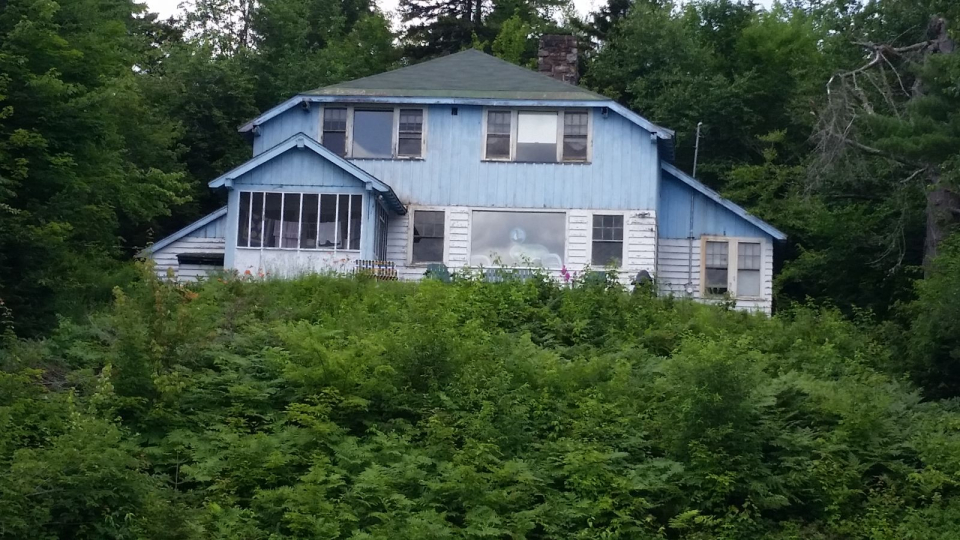
We paddled along, leisurely enjoying our time, when I spotted the first cottage. The blue and white house sits atop a hill with a beautiful shoreline. I told my friends about the cottages, and not too far from the first one we spotted the brown and cream colored cottage. Again, it was not what I expected — it was quite large! Neither cottage fit the definition of a cottage, small and simple. Both seemed to be in need of repair, but beautiful nonetheless.
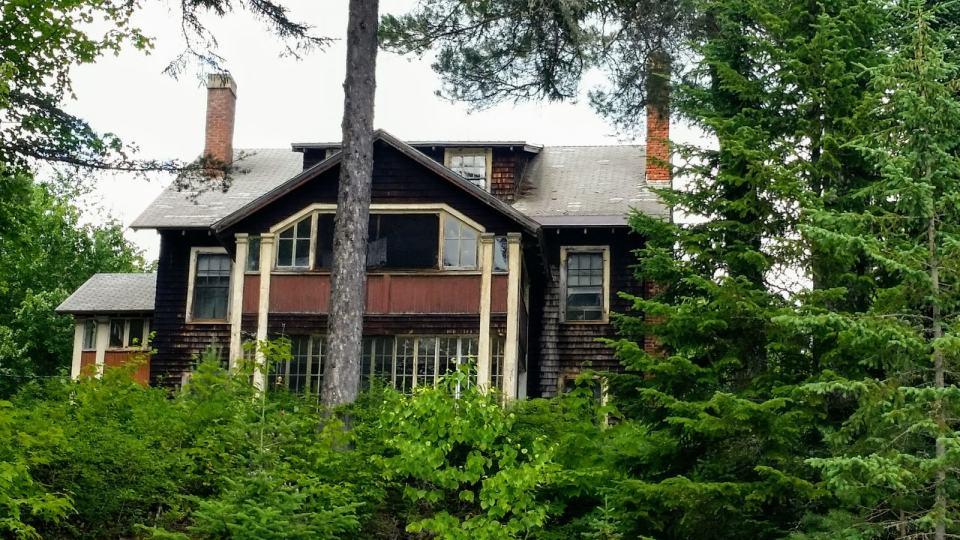
Camping
I was aware of several primitive campsites on the lake, but I was not aware that Buck Pond, a state campground that has sites on Lake Kushaqua accessible by land and two remote campsites that are boat access only. Buck Pond and Lake Kushaqua are not connected, so you must portage.
We spoke with a group of campers from Montreal; they, along with their dogs, were enjoying the quiet of the Adirondacks. They used their camper for sleeping, cooked on their grill outside, and would eat outside unless the weather was really bad.
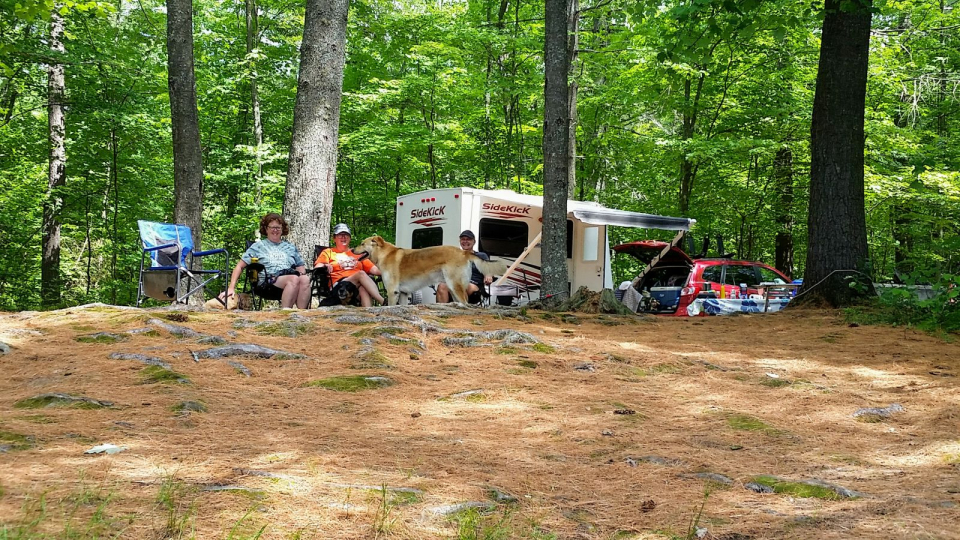
We found some primitive sites, a couple of which were accessible by land. One was exceptionally large and beautiful! Our guess was that it would be hard to acquire, but with a little luck maybe we could camp there next summer for a few days. As for the remote Buck Pond sites, I checked the Reserve America website upon arriving home and they were booked for the remainder of the season, except for one that was availbe for a single night.
We paddled to the north end of the lake to another bridge on the Kushaqua Mud Pond Road. There were a few people in this area; some were fishing at the bridge while a couple from Rochester enjoyed their inflatable kayak and their first camping trip to Buck Pond. We became very hungry on our way back, but the island we wanted to stop at was unfortunately occupied. We landed at the Kushaqua boat launch and crossed the road to have lunch while viewing Buck Pond.
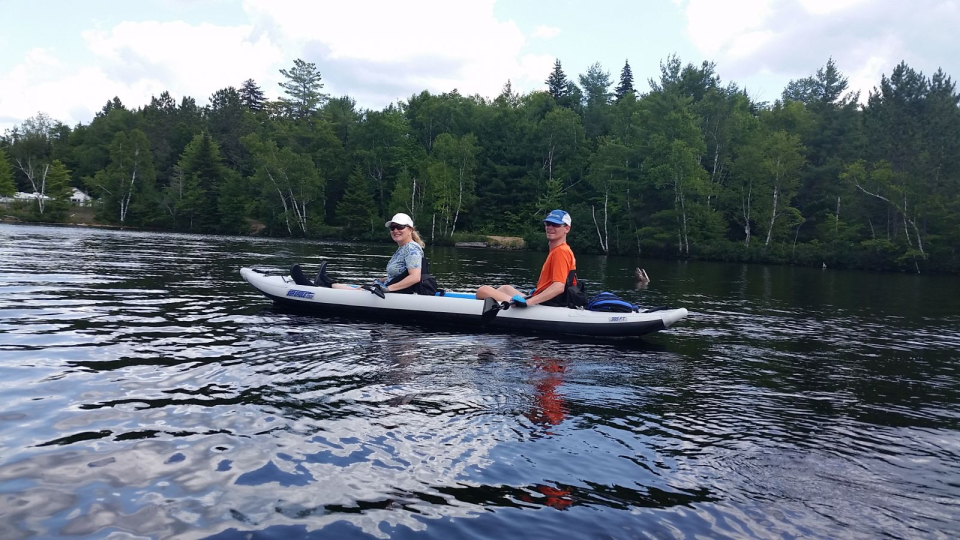
This beautiful lake with a beautiful name is one of my favorite places to paddle. Check it out! On your way back to Saranc Lake be sure to stop at Donnelly's for their famous ice cream!

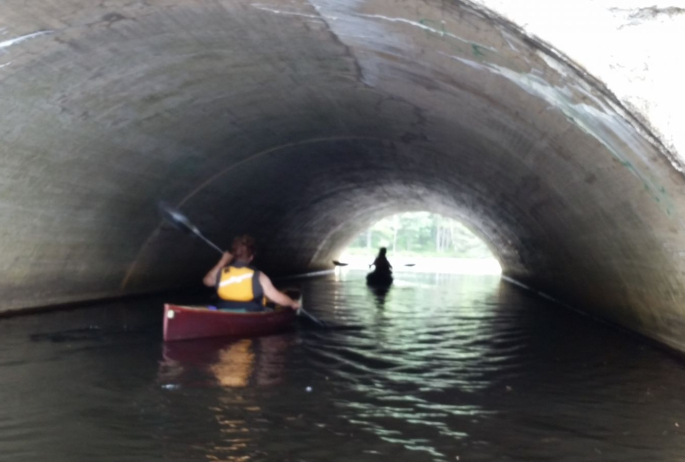
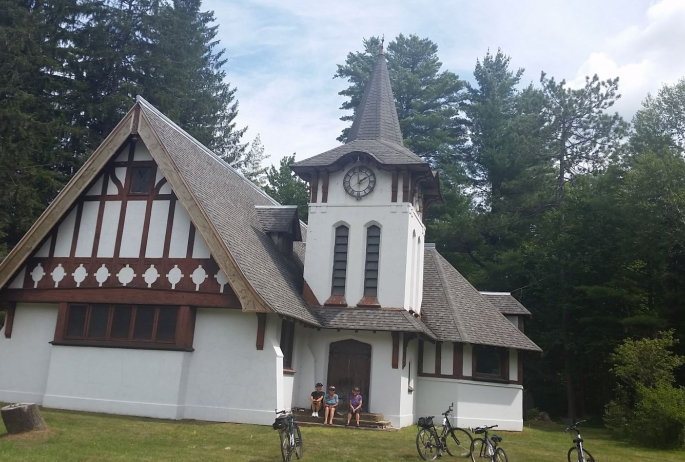
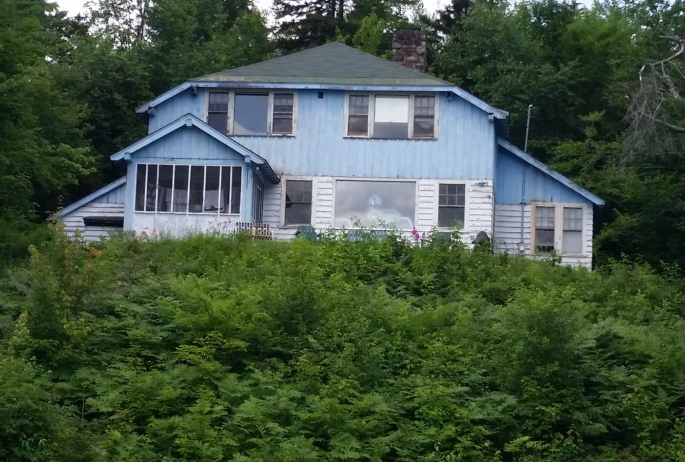
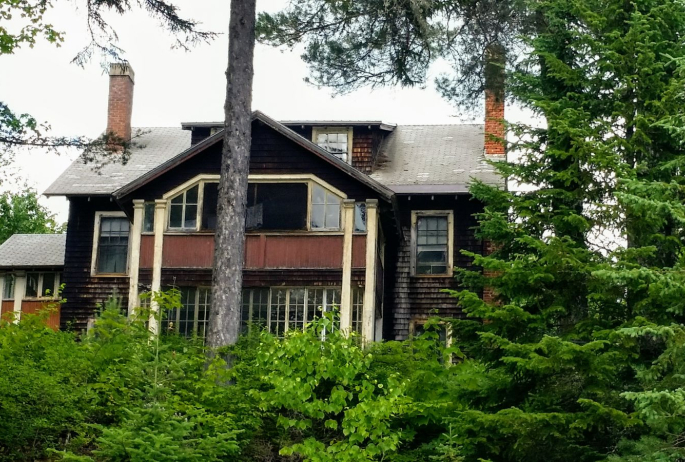
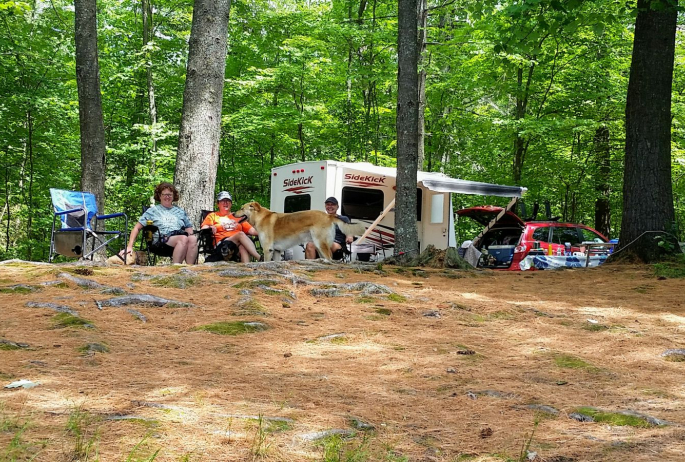
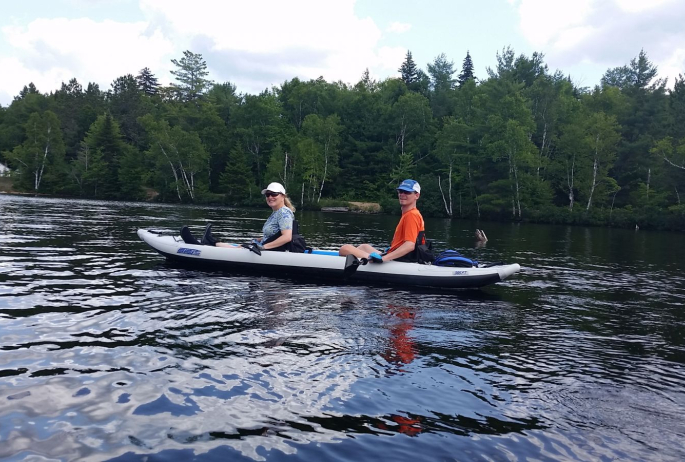
Packages and Promotions
Valid Jun. 20
- Sep. 7
Valid Mar. 12
- Jun. 30
Guided Nature Immersions - 10% off for Pre-Season Registration
Adirondack Riverwalking & Forest Bathing
Picture it now...you are wading the Ausable River on a warm summer day, feel the cool water against you, hear the sounds of the birds and the...
Valid Jan. 16
- Mar. 31
Valid Jan. 16
- Mar. 31
Hotel Saranac Ski & Stay Package
Hotel Saranac
Stay & Ski Package Stay at Hotel Saranac and Ski Titus Mountain Day or Night Package Your room reservation includes one adult lift ticket....
Valid May. 1
- Oct. 31
Valid Dec. 6
- Nov. 1
Zip and Whip Expedition
Farmhouse UTVs
Experience Outdoors and Farmhouse UTVs have teamed up to bring your family and friends the Adirondack adventure you've been waiting for....
Valid Jan. 21
- Jan. 21
Valid Jan. 21
- Jan. 21
Stay and Dine
Voco Saranac Lake
Receive a 50 dollar credit per stay to use in our Boathouse Saranac Lake Pub. Enjoy an exceptional dining experience with unparalleled views great...
Valid Jan. 21
- Mar. 31
Valid Jan. 21
- Mar. 31
Titus Mountain Ski Package
Voco Saranac Lake
Enjoy your stay at the award winning voco Saranac Lake which includes two adult lift tickets at Titus Mountain Family Ski Center. Additional...
Valid Jan. 16
- Mar. 31
Valid Jan. 16
- Mar. 31
Hotel Saranac Sled & Spoke Package
Hotel Saranac
Snowmobile Package Hotel Saranac and Sara-Placid Sled & Spoke have partnered so you and a guest can explore dozens of miles of ADK snowmobile...


